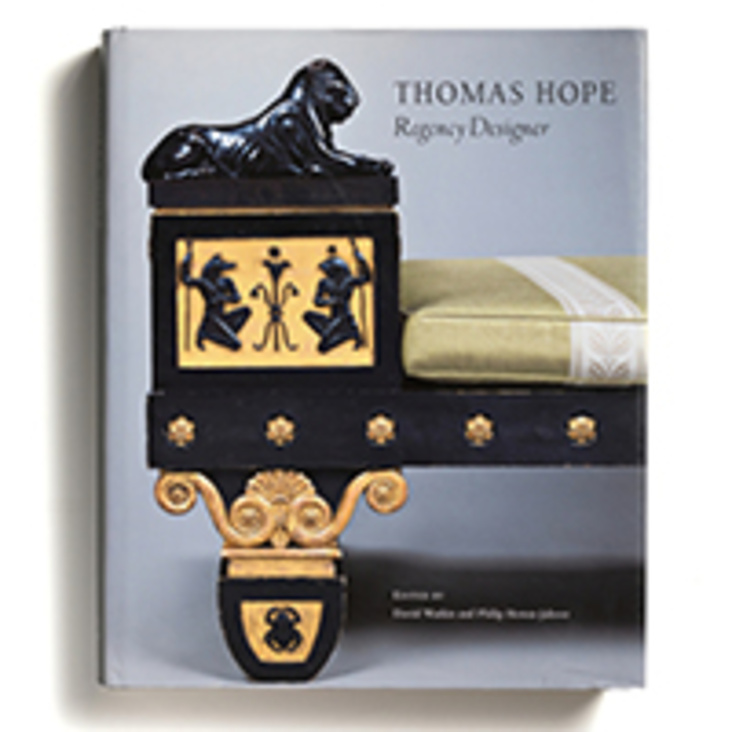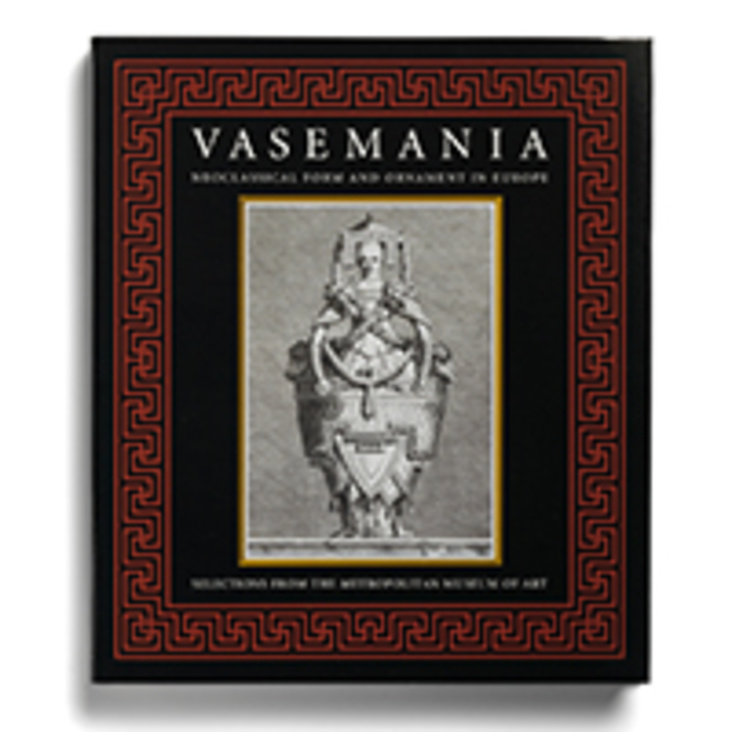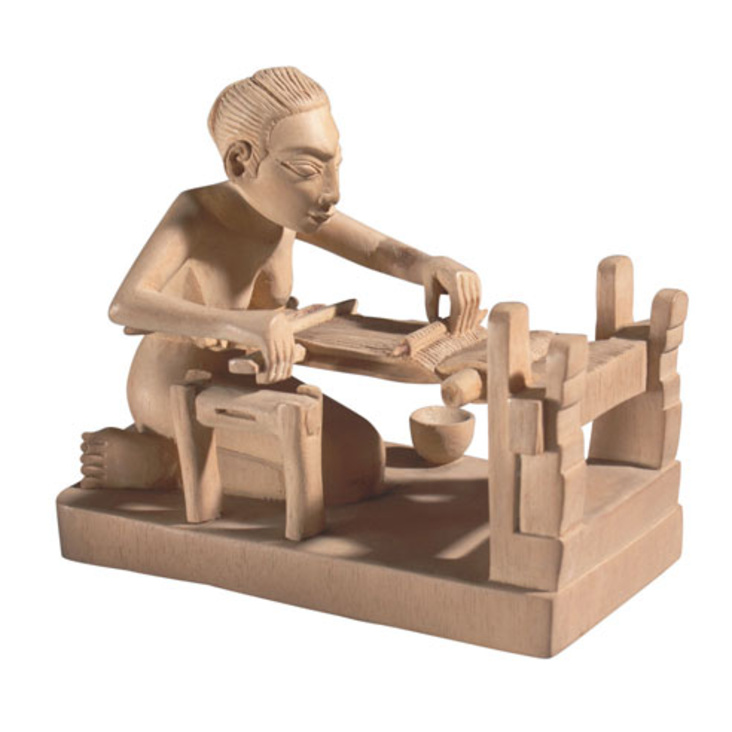Vasemania – Neoclassical Form and Ornament: Selections from The Metropolitan Museum of Art was the first exhibition resulting from a collaboration between the Metropolitan Museum and the Bard Graduate Center—a collaboration that was established in 2001 to give BGC students the opportunity to experience curating an exhibition firsthand with rarely exhibited objects from the Metropolitan’s collections.
The exhibition explored the revival of classicism in the 18th century as exemplified by the vase motif. Comprising approximately 100 examples of ceramics, silver, textiles, furniture, works on paper, and paintings, Vasemania examined how the vase represents the unity as well as the variety of ornamentation, form, and color during the neoclassical period.
Significant discoveries during the excavations of the ancient Roman cities of Herculaneum (1738) and Pompeii (1748) ushered in a renewed interest in classical forms in design, as well as the imagery and subject matter found in the decoration of objects. The new style, known as neoclassicism, permeated the painting, sculpture, furniture, and interior design of the late 18th and early 19th centuries. One of the most prevalent images of the period—and one that came to symbolize neoclassicism—was the vase. As a fairly common remnant of the antique past, the vase rose to popularity through the activities of antiquarians and collectors such as Sir William Hamilton, whose influential publication of his vast collection of Greek vases elevated the motif to the status of a cultural icon and historical model. Other noteworthy scholar-collectors of antique objects at the time included the Comte de Caylus in France, Giovanni Battista Piranesi in Italy, and Johann Joachim Winckelmann in Germany. Well-known producers, such as Wedgwood in England and the Sèvres Porcelain Manufactory in France, created new ceramic interpretations of ancient vessels. The decorative sensibilities and techniques developed by each illuminate individual company preferences as well as marketing and technological innovations resulting from evolving consumerism. The many manifestations of the vase form in continental Europe provided a new paradigm of beauty based on the common assumption of classicism’s universal significance and validity. Variations on the use of the vase in other media—silver, furniture, woodwork, and textiles—demonstrate the strength and pervasiveness of the motif in direct as well as more imaginative reincarnations. The exhibition was by no means restricted to functional vessels or garden ornaments; rather, it appreciated the vase as the central element of design or ornament in, for example, wine and water urns, knife boxes, ink wells, perfume burners, furnishing fabrics, and carved paneling. English works by Matthew Boulton (1728–1809) and in the style of Robert Adam showcased objects in precious stones and elegant pieces of marquetry furniture. The reinterpretation of the antique in silver was exemplified by drawings by Jean-Guillaume Moitte (1746–1810) and Henry Auguste (1759–1816), which were juxtaposed with corresponding objects by Jacques-Nicolas Roettiers (1736–1788), Paul Storr (1771–1844), Jean-Baptiste-Claude Odiot (1763–1850), and other European silversmiths. Drawings and prints of vase designs by leading artists of the period included works by Giovanni Battista Piranesi (1720–1778), Jean-Charles Delafosse (1734–1789), and Louis-Joseph Le Lorrain (1715–1759). The thematic range of the vase motif—from austere to fantastic to romantic—revealed how artists adapted its archaeological associations with increasing freedom as it was integrated into contemporary design practice.
The first section of the exhibition explored the importance of the Hamilton Collection and the role of the vase motif in the development of neoclassicism. Sir William Hamilton (1730–1803) was British Envoy to the Kingdom of Naples and the Two Sicilies from 1764 to 1798. He was a renowned collector of antiquities, and his fascination with classical art had considerable influence on artistic life in Britain in the 18th century. His collection included objects from the recently excavated ruins of Pompeii and Herculaneum. As a designer and manufacturer, Josiah Wedgwood (1730–1795) was particularly influenced by Hamilton’s collections of vases. Wedgwood profited greatly from the production of vessels in the antique manner, many in black basalt painted to imitate classical originals. The second section focused on the highly original designs by French and other artists that exemplify the earliest phase of neoclassicism in the 1760s, known as the goût grec or Greek taste. While most of these compositions bear little resemblance to vase designs actually used in the ancient world, they evoke antiquity in a more imaginative way. Many examples adapt motifs from classical architecture and ornament or draw on Renaissance interpretations of ancient vessels. With the goût grec vase, designers helped to establish the ornamental canon for neoclassical decorative arts, which favored motifs such as heavy laurel garlands, Greek meanders, geometric forms, rams’ heads, and satyr masks, all arranged in strict symmetry. The third section of the exhibition focused on how specific royal manufactories in the 18th century incorporated classical forms and decorations into their ceramic production. Objects produced by the great French ceramic factory at Sèvres highlighted this section, along with representative works from German, Spanish, and English makers. The works exhibited reflected the artistic tension that existed within the Sèvres factory between the desire to incorporate antique forms and ornamentation, and the dependence on older rococo styles that made Sèvres Europe’s leading manufacturer of ceramics in the early 18th century. The fourth section contrasted the situation at Sèvres and other royal manufactories with the new, rising entrepreneurial production of decorative vases, especially in England under Josiah Wedgwood. The display of works by Wedgwood and his competitors discussed and illustrated the commercialization and marketing of the vase, which created intense interest in classical forms and decoration throughout Europe.
It was not just in the production of ceramics that references were made to classical vase forms and decoration. Vasemania also included works by some of the leading silversmiths of the 18th century. Artists such as Jacques-Nicolas Roettiers, Henry Auguste, Martin Guillaume Biennais, and Paul Storr exquisitely translated many of the forms and ornamentation found in antique ceramics into silver tureens, pitchers, urns, and inkstands. Examples of textiles and furniture revealed how widespread the vase was as a form and ornament in all aspects of 18th-century design. The exhibition closed with a number of images that either exalt the vase form or satirize the “vasemania” that swept 18th-century Europe. Examples included a 1771 etching by Ennemond Alexandre Petitot that depicts an elaborately costumed woman who takes on the form of a classical vase. Entitled The Greek Bride, this work fittingly reveals, in a humorous manner, how the vase form embodied the contemporary notion of antiquity like no other motif.
The exhibition was curated with the assistance of MA and PhD students from the Bard Graduate Center, who took part in a Museum History and Practice course that focused on the “Vasemania” theme. Dr. Stefanie Walker, Special Exhibitions Curator at the Bard Graduate Center, taught the course with the assistance of William Rieder, Curator and Administrator at the European Sculpture and Decorative Arts department at the Metropolitan Museum.
A full-color catalogue of all objects in the exhibition accompanied Vasemania. Entries in Vasemania, Neoclassical Form and Ornament in Europe: Selections from The Metropolitan Museum of Art were written by the Bard Graduate Center students who participated in the initial Museum History and Practice course held in conjunction with the planning of the exhibition and with the help of various curators from the Metropolitan Museum. The catalogue contains two introductory essays. Heather Jane McCormick, a PhD candidate at the BGC, wrote “Collecting Neoclassical Decorative Art at The Metropolitan Museum of Art.” This essay traces the Metropolitan’s history of collecting decorative arts from the neoclassical period, highlighting significant collectors and acquisitions. One of the first substantial collections of decorative arts that entered the Met was the one J. Pierpont Morgan purchased from the Parisian architect Georges Hoentschel in 1906 and subsequently donated to the museum. The significance of this collection lies in its quality as well as the fact that its arrival at the Met prompted the construction of a new gallery wing and the establishment of what is now the European Sculpture and Decorative Arts department. In the second introductory essay, “Metamorphosis of the Neoclassical Vase,” Dr. Hans Ottomeyer (Deutsches Historisches Museum, Berlin) chronicles the development of the vase theme throughout this period. From its earliest phase (goût grec) through its most refined development (goût étrusque) to its final phase, known as the Empire, the author emphasizes the dominant role played by French collectors, artists, designers, and critics.
















